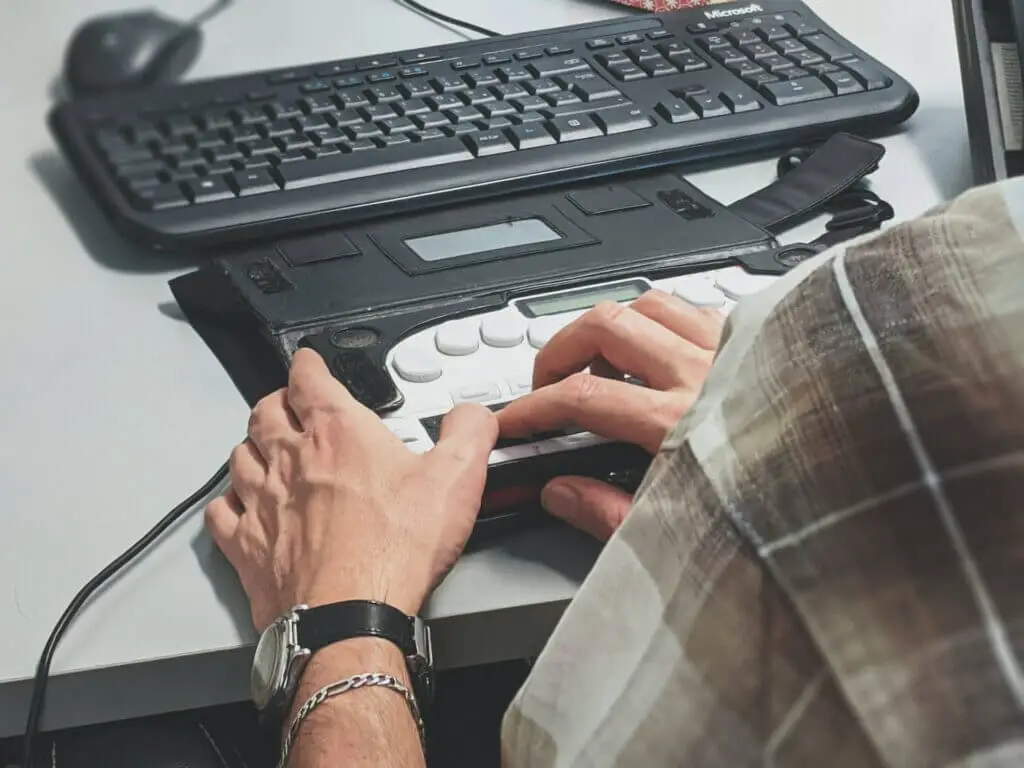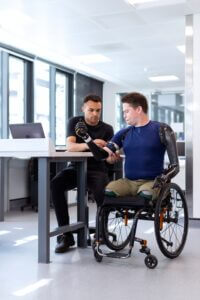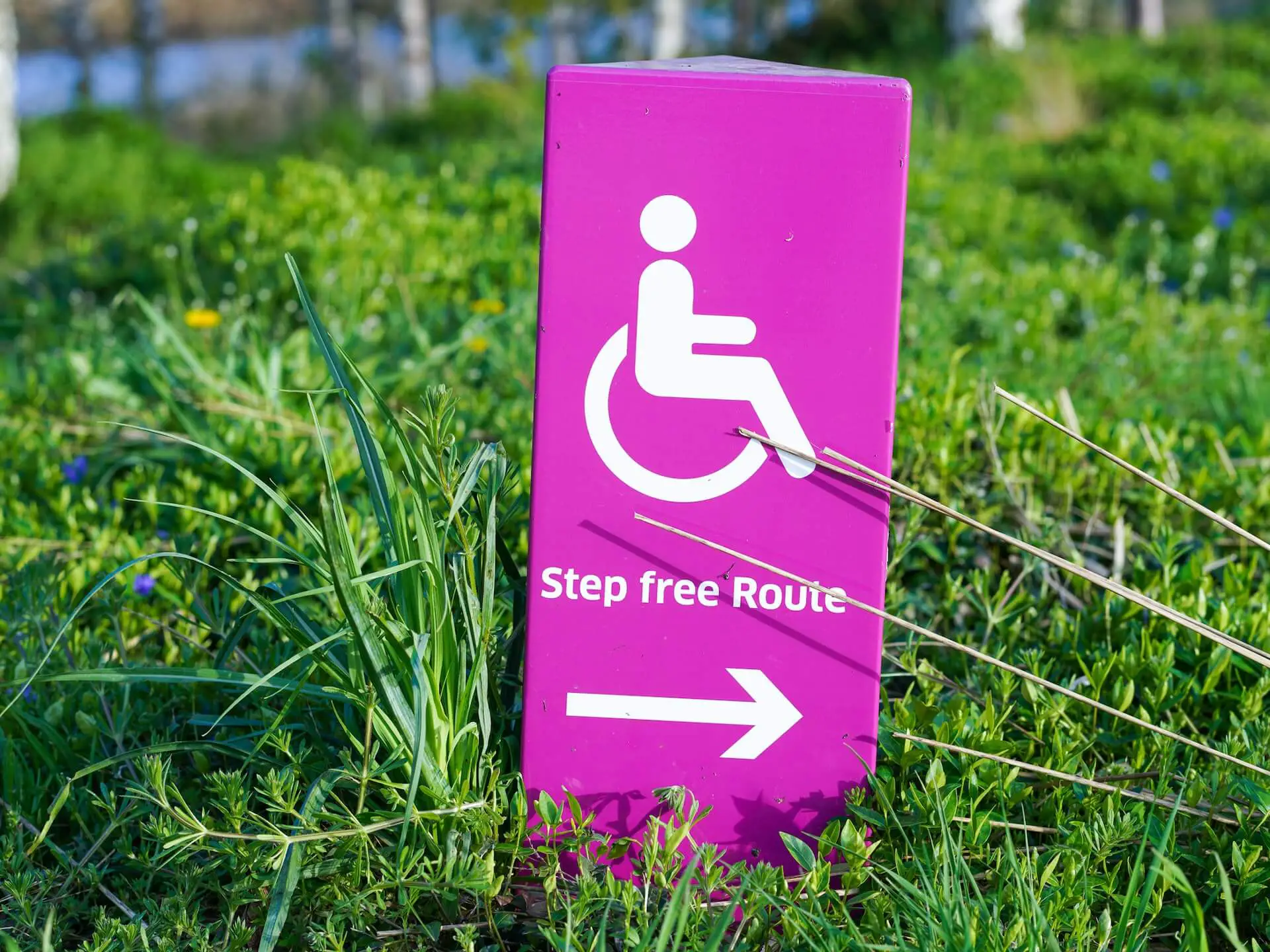We may earn money or products from the companies mentioned in this post.

Bringing Access to Everyone
It’s easy to take technology access for granted. If you can hear, see, and use your hands, then you’ll never struggle to use the internet. But the minute you lose one of your abilities, it becomes hard to use even a simple website! That can lead to a lot of other problems. Luckily, the Internet age has led to a lot of amazing new assistive technology made just for computer users. Some of them are so groundbreaking that they’re helping to expand opportunities. People who might have struggled to find work or social connections before the modern age are turning to computers to improve their lives.
What is assistive technology?
Assistive technology isn’t just about the Internet. Braille, hearing aids, and even curb cuts all count. Many of those gained traction in the 19th and 20th centuries as the public became more aware of the importance of disability support. But for the purposes of this article, we’re going to talk about how assistive technology helps people use computers and the Internet.
The Internet opens doors to community, work, and self-determination. Before accessibility software, a Deaf person might have had trouble finding an job that would accommodate them. It wasn’t exactly something that showed up in classified ads with regularity. Now, someone in that position may be able to find remote work online, locate a community or employer with respect for accessibility issues, or even open their own business!
Who benefits?
It’s much too easy to think of disabilities as being rare. They’re not! For one thing, 15% of the worlds population has a disability. In fact, if you live a long, full life, you will almost certainly end up with one or two yourself even if just from old age. While 15 of every 100 people alive lives with a disability, 46% of people over 60 have at least one. These can include natural hearing loss, macular degeneration, and mobility issues like arthritis.
People with profound, lifelong disabilities benefit the longest from assistive technology. This is because their use of it will cover their most productive years. The ability to access the Internet can allow them to find work, locate housing, and get healthcare even if they can’t drive or speak. But elderly people who develop disabilities late in life often aren’t prepared to compensate for them. They can lose contact with friends and family if they lose the ability to use a phone, send an email, or log onto a video call. This can lead to faster cognitive decline, loneliness, and depression. Assistive technology can extend their good years.
For Deaf and hard of hearing
If you’ve ever watched a film at work while you were supposed to be busy, you’ve used assistive technology! Captions, especially auto-captions, have opened the world of online media. Now, people who are Deaf or hard of hearing can enjoy videos on the Internet, too! YouTube and other online services now provide this service almost all the time. Even online meeting software like Zoom provides captioning. In the case of YouTube, creators also have the option to caption their videos for a more accurate result.
Speaking of meeting technology, video calling can be assistive too! Deaf people who use sign language may find that apps like FaceTime allow them to communicate in comfort. (Since it comes with many phones, it also doesn’t cost extra!) Deaf people who write also have the option to text hearing people instead of calling. Zoom even has a chat function that can be a useful way to communicate in a pinch.
Sight for the blind
People with profound blindness can still use the Internet with a type of software called a screen reader. This program does exactly what it says! Using keyboard controls, a practiced user can listen to the program read out loud what’s on the screen, navigate links, and even take in visuals. Pictures on web pages have the option to feature alternative text that’s visible to screen readers. Web developers use this option to describe what’s in the picture so that blind people using screen readers can also get that information.
Today, it’s good practice for web developers to add alt text to their images. There are even some pretty good guidelines on how to do this in a way that optimizes how screen readers do their job.
There are also refreshable Braille displays that translate the content on the screen to a tactile board. A Blind person who reads Braille could then read the screen using the board. As they move the cursor around, the board responds, changing to reflect what the mouse is hovering over at that moment.
Assistive technology for people with physical disabilities
Here’s another type of assistive technology that you’ve probably used! Joysticks are a great mouse alternative for people with physical limitations because they’re easy to grasp and move. But paralyzed people have to get very creative when they use the Internet. Devices already exist that let paralyzed people use their computers with their mouths. It’s also possible to control some computers with your eyes as long as you have the right equipment. Research is also ongoing for brain implants.
Even for people with less severe physical disabilities, smart houses and the Internet of Things have made life easier. The ability to verbally command an Alexa unit is already a gift to people who find flipping a switch difficult, painful, or impossible. Speech-to-text converters in phones also help ease the difficulty of hitting a small screen’s even tinier buttons.
Assistive technology is booming right alongside the Internet. The fact that it’s becoming ubiquitous is great for the over 1 billion people on Earth with a disability. That said, accessibility is good for everyone and even able people should support it. Even if you don’t have a disability right now, isn’t it great to know that if you did lose your hearing or eyesight, you’d still be able to read our articles? Until then, you can thank the Deaf community for all those amazing YouTube captions.
You Might Also Like – The Digital Divide

